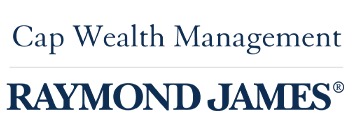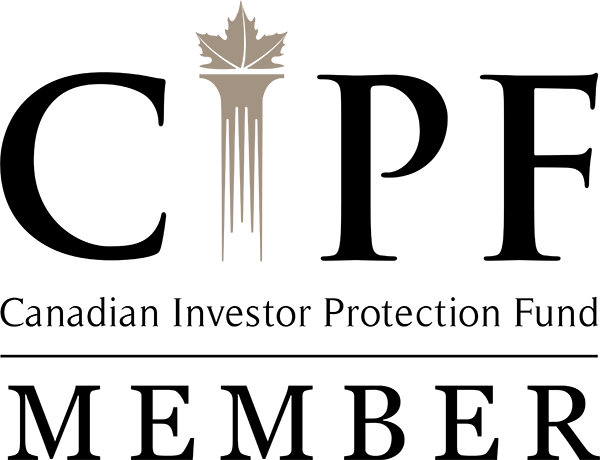RRSP, TFSA, or FHSA: Choosing the Right Savings Plan for Your Goals
When you’re setting money aside for your future, Canada offers three powerful registered accounts: the Registered Retirement Savings Plan (RRSP), the Tax-Free Savings Account (TFSA), and the First Home Savings Account (FHSA).
Each has unique features that can help you save faster, pay less tax, and grow your investments — but the best fit depends on your goals. Let’s break down how they work, how they compare, and how you might use them together.
How They Compare At a Glance
| RRSP | TFSA | FHSA | |
|---|---|---|---|
| Best for | Lowering taxes now; long-term retirement savings plans or goals | Flexible, short- to medium-term savings or long- term retirement goals. | First-time homebuyers seeking tax deductions plus tax-free withdrawals |
| Primary goal | Retirement savings | Any savings goal | First home purchase |
| Tax treatment | Contributions deductible today; withdrawals taxed later | Contributions are after-tax; growth & withdrawals tax-free | Contributions deductible today; growth & qualifying withdrawals tax-free |
| Contribution limit | 18% of prior year’s earned income (up to annual maximum); unused room carries forward indefinitely (until age 71) | $7,000 annual limit (2025); unused room carries forward indefinitely . Withdrawals are added back to your contribution room the following year. | $8,000/year, $40,000 lifetime maximum; unused annual room carries forward for one year |
| Withdrawals | Taxed; no restoration of contribution room (except Home Buyers’ Plan & Lifelong Learning Plan withdrawals that are repaid) | Tax-free; withdrawal amount added back to room on January 1 of the next calendar year | Tax-free if used for first home; no room restoration; can transfer to RRSP if unused |
What Is an RRSP?
Save for tomorrow, pay less tax today
The Registered Retirement Savings Plan (RRSP) is a government-registered account designed to help Canadians save for retirement. Contributions are tax-deductible, meaning they reduce your taxable income in the year you make them. Your investments grow tax-deferred within the account, so you won’t pay taxes on gains until you withdraw the funds, ideally during retirement when your income and tax rate may be lower.
The RRSP also offers special flexibility with programs like the Home Buyers’ Plan (HBP), which allows first-time homebuyers to withdraw up to $ 60,000 tax-free toward a home purchase, provided they repay the amount over 15 years. There’s also the Lifelong Learning Plan (LLP), which lets individuals withdraw up to $10,000 per year (up to a $20,000 total) to finance full-time education or training for themselves or their spouse, with repayment required over 10 years.
What Is a TFSA?
Tax-free growth and total flexibility
The Tax-Free Savings Account (TFSA) is a versatile savings tool where your money grows completely tax-free. Contributions are made with after-tax dollars, so although you don’t get an upfront tax deduction, you won’t pay any tax on investment growth or withdrawals .
You can use a TFSA for virtually any goal — from emergency funds to travel, major purchases, renovations or retirement investing. Withdrawals can be made anytime without penalty, and the amount withdrawn is added back to your contribution room in the following year, giving you ongoing flexibility.
What Is a FHSA?
The newest way to save for your first home
The First Home Savings Account (FHSA) is a newer registered account designed specifically for first-time homebuyers. It combines the best features of RRSPs and TFSAs: your contributions are tax-deductible (lowering your taxable income), while your investment growth and withdrawals for a qualifying home purchase are completely tax-free.
You can contribute up to $8,000 annually, with a lifetime maximum of $40,000. If you don’t buy a home within 15 years (or by age 71), you can transfer your FHSA savings to your RRSP to retain your tax advantages.
When to Use Each Account
RRSP
- Ideal if you want to reduce your taxable income now.
- Best if you expect to be in a lower tax bracket in retirement.
- Use if you plan to access the Home Buyers’ Plan (HBP) or Lifelong Learning Plan (LLP).
TFSA
- Perfect for easily accessible, tax-free savings for emergencies, travel, short or long-term goals.
- No tax on withdrawals and contribution room is restored afterward.
FHSA
- Designed for first-time homebuyers.
- Contributions are tax-deductible, like RRSPs.
- Withdrawals used for a qualifying home are tax-free, like TFSA withdrawals.
- If you don’t buy a home within 15 years (or by age 71), funds can be transferred to an RRSP.
How to Combine Them for Maximum Impact
Using multiple accounts together lets you balance tax savings, flexibility, and long-term growth:
- Buying a first home? Maximize your FHSA first, then your RRSP to benefit from tax-free HBP withdrawals and a TFSA for any extra short-term savings such as home renovations. then.
- Focused on retirement? Use your RRSP for the tax deduction, and your TFSA for accessible, tax-free growth.
- Want flexibility? Prioritize your TFSA for anytime access and contribute to an RRSP or FHSA as your income and goals allow. RRSPs offer tax deferral but convert to RRIFs at age 71, triggering taxable withdrawal requirements. If you’ve already built up your RRSP, shifting focus to your TFSA can offer more flexibility in retirement, since TFSA withdrawals are tax-free and don’t affect income-tested benefits.
This approach covers your short, medium, and long-term goals, while keeping your options open.
Tips & Common Pitfalls to Avoid
- Always track your contribution limits on the CRA My Account portal to avoid penalties.
-
Avoid over-contributions:
- TFSA & FHSA excesses incur a 1% monthly penalty on the overage.
- RRSP over-contributions above $2,000 also result in penalties.
- If you don’t use your FHSA for a home purchase, transfer the funds to your RRSP before the deadline to use the funds to keep tax benefits intact.
- FHSA withdrawals for buying a home don’t affect income-tested benefits, an important factor to consider.
- If you are a U.S. person, additional tax considerations may apply for TFSA and FHSA accounts. Speak with your tax accountant to understand the U.S. tax implications.
Helpful Tools & Resources
Raymond James offers several calculators to help you compare and plan your savings strategy:
- TFSA vs. RRSP Calculator Understand which account may deliver better returns based on your tax bracket and goals.
- TFSA vs. Taxable Investment Calculator: See how sheltering investments from taxes can boost growth.
- RRSP Tax Savings Calculator: Estimate the tax refund you can expect from contributing to your RRSP.
Ready to Get Started?
Whether you’re planning for a home, retirement, or simply want to grow your money tax-efficiently, the RRSP, TFSA, and FHSA each offer powerful advantages. The key is choosing — or combining — them in a way that matches your timeline and financial priorities.
Contact your Raymond James advisor to help you create a tailored plan so every dollar you save works harder toward your future.
It is recommended that clients seek independent advice from a professional advisor on legal and tax-related matters Securities-related products and services are offered through Raymond James Ltd. (RJL), regulated by the Canadian Investment Regulatory Organization (CIRO) and a Member of the Canadian Investor Protection Fund. RJL financial/investment advisors are not tax advisors, and we recommend that clients seek independent advice from a professional advisor on tax-related matters. Insurance products and services are offered through Raymond James Financial Planning Ltd., which is not regulated by CIRO and is not a Member of the Canadian Investor Protection Fund. Solus Trust Company (“STC”) is an affiliate of Raymond James Ltd. and offers trust services across Canada. STC is not regulated by CIRO and is not a Member of the Canadian Investor Protection Fund.




